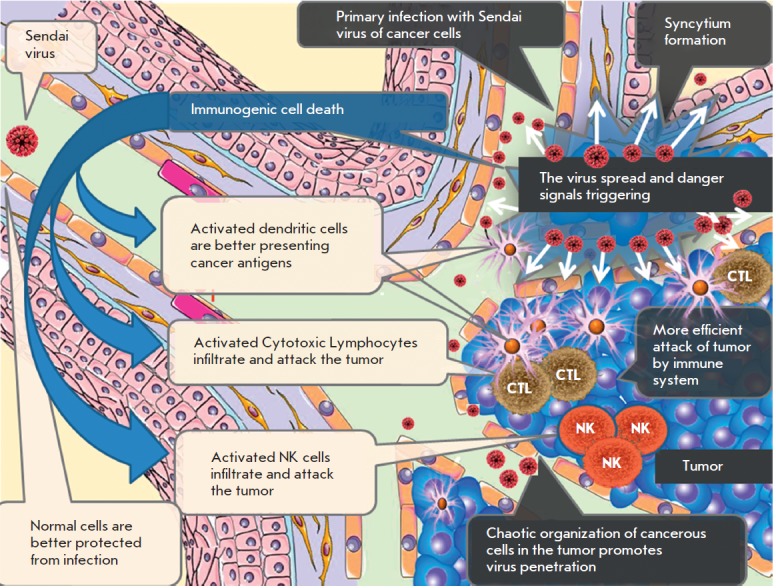Fig. 5.

Sendai virus indices both direct and immune-mediated death of cancer cells. Cancer cells are more accessible to viruses and susceptible to viral replication. Ordered architecture of normal tissues (blood vessels, basal membranes, tight cell-to-cell contacts etc.) protects against viral invasion from the bloodstream. Chaotic organization of a tumor, loose cell-to-cell contacts, and leakiness of immature tumor vasculature provide better access to viruses. Normal cells exposed to viruses provide antiviral protection to surrounding normal cells by secreting IFNs. Tumor cells are generally defective for IFNs induction and, therefore, support viral replication even in the present of IFNs produced by the surrounding normal cells. The Sendai virus is capable of accelerated spread inside a tumor through the formation of syncytia. Exposure of viral antigens on the surface of infected cells induces massive immunogenic death of tumor cells. Virus-specific proteins represent danger signals triggering activation of innate and adaptive anticancer immune responses. Activated cytotoxic T lymphocytes (CTLs), natural killer (NKs), and antigen-presenting dendritic cells (DCs) migrate into the tumor and provide accelerated immune-mediated destruction of malignant cells
